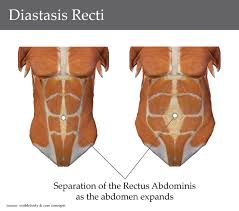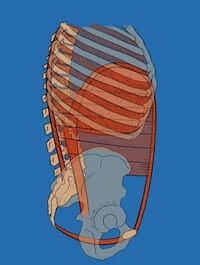Diastasis Recti
Diastasis recti is a separation of the rectus abdominal wall, coupled with an influx of pregnancy hormones that soften connective tissue. While often painless, many women consider the condition to be cosmetically disfiguring.

Risk Factors for Diastasis Recti include:
- multiple birth pregnancy
- multiple pregnancies close together
- large birthweight baby
- pregnancy over age 35
- abdominal surgery
- abdominal obesity
Because the muscles of the abdominal canister protect the spine and stabilize the pelvis during physical activity, diastasis recti can inhibit and impede physical performance. When left untreated, diastasis recti can lead to low back and pelvic pain, constipation, movement dysfunction, and hernia.

Diastasis Recti Diagnosis
Diagnosis of diastasis recti entails a manual physical exam and diagnostic ultrasonography to assess the severity of the condition.
Diastasis Recti Treatment
While surgery may be a viable treatment option in severe cases, it will not restore function of the rectus abdominal strengthening exercises like crunches and leg lifts should be avoided, as they can aggravate the condition.
The post-partum specialists at NYDNRehab use conservative targeted methods and specific interventions that are clinically proven to activate the deep abdominal wall, using a combination of DNS (dynamic neuromuscular stabilization) and ISM (integrated system model) approaches.
You do not have today, and see why the sports medicine professionals at NYDNRehab are considered the very best in NYC.


































